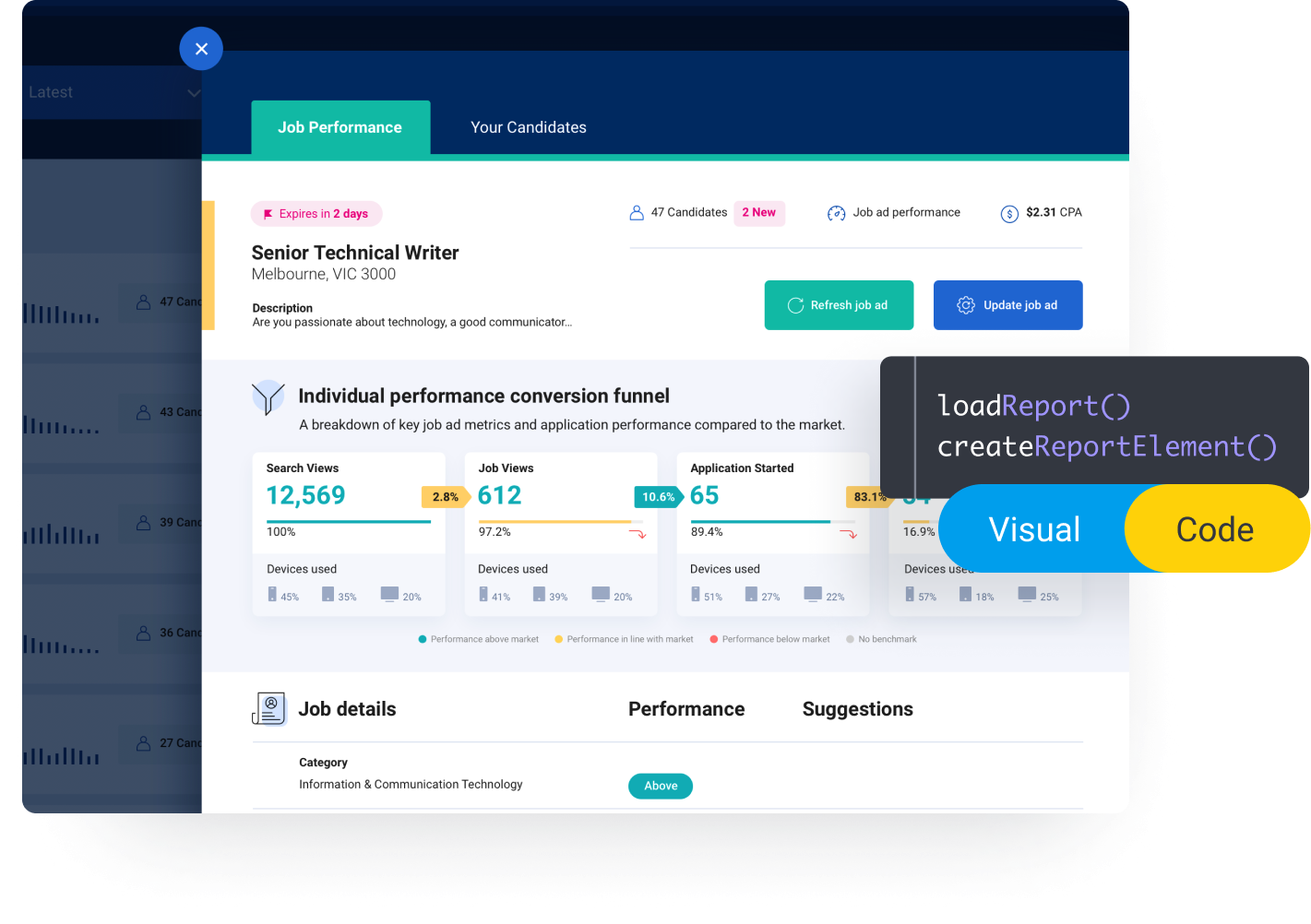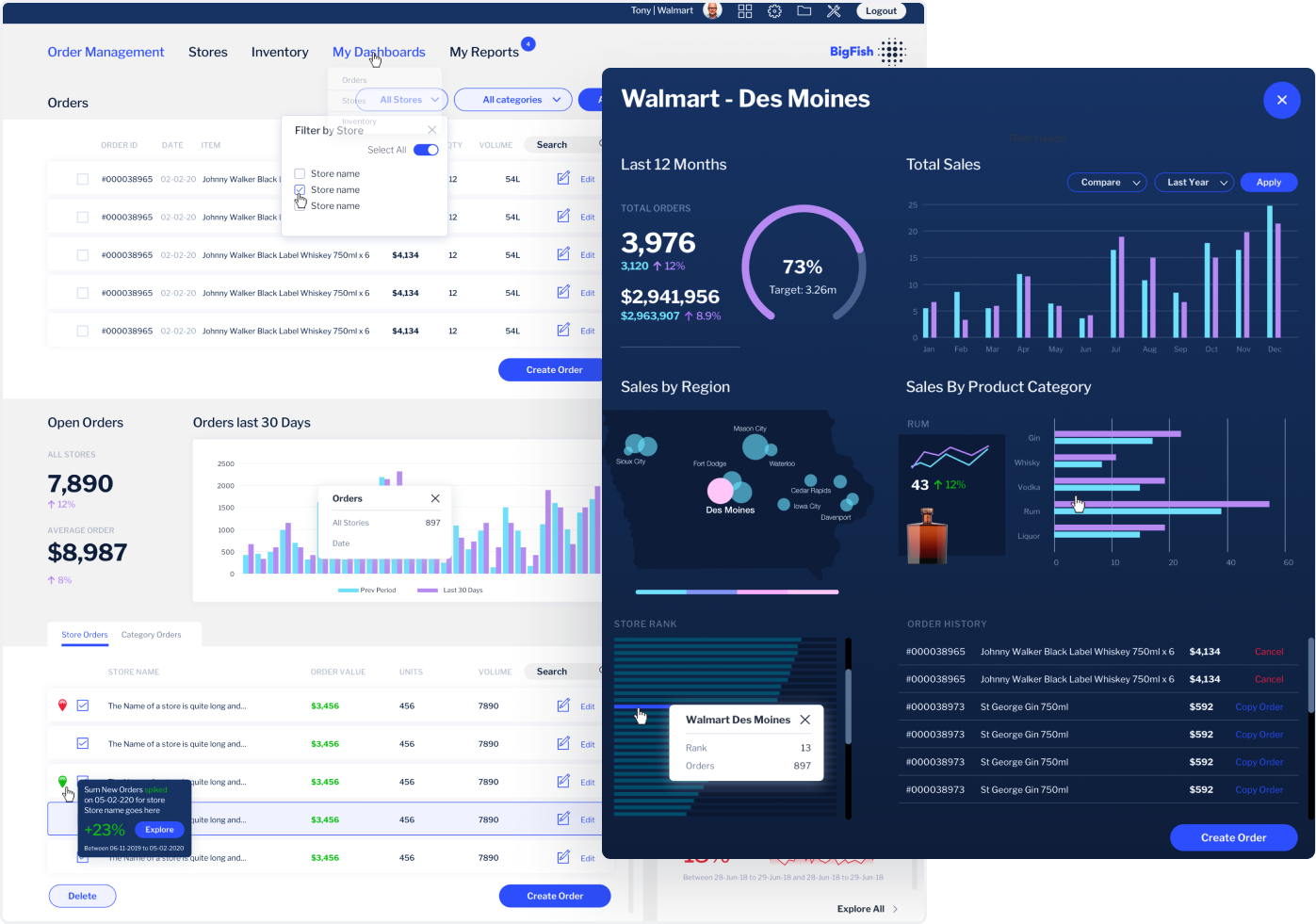In today’s fast-paced digital environment, delivering value quickly is critical to staying competitive and gaining buy-in from both stakeholders and customers. One of the key enablers of this rapid value delivery is embedded analytics, a business solution that allows you to integrate interactive data visualizations and business intelligence (BI) features directly into your existing applications.
With embedded analytics tools, your company can enhance its product offerings with powerful analytical capabilities, reduce development timelines, and empower your teams to focus on strategic objectives. Best of all, it can significantly improve speed-to-value.
In this blog, Yellowfin GM Chance Coble will break down three specific ways embedded analytics improves speed to value, to provide you with a better understanding of the benefits this type of analytics solution brings to the table.
1. Reduced design and coding effort
One of the most significant advantages of embedding BI tools into your product (see our explainer on what is embedded analytics) is the reduction in design and coding effort.
Traditionally, when companies attempt to build analytics features from scratch, significant time and resources from various departments, including development, design, and quality assurance (QA) is required. The entire process involves creating requirements, developing the features, writing code, conducting tests, and maintaining the solution over time. This typical approach not only delays the release of analytics capabilities, but also places a heavy burden on your product team, who likely have other tasks to fulfill.

By leveraging an embedded analytics platform, your company can bypass many of these steps and save a lot of time and money. Instead of building analytics features in-house, you can plug in a fully functional, customizable BI tool that has already been designed, tested, and optimized. Such platforms come with pre-built dashboards, data visualization tools, and reporting capabilities, allowing your developers to focus on integrating them into the product, rather than starting development of new features from scratch. They also offer both visual-based and code mode editors for easy and advanced integrations.
Furthermore, because certain embedded analytics solutions, such as Yellowfin BI, are designed to be white-labeled, they can be seamlessly integrated into your application’s existing look and feel. This means less design work and more focus on delivering core product features.
The net result? A faster time-to-market for analytics features, reduced development costs, and more time for your product team to work on high-priority features that differentiate your product in the market.
Read more: The Ultimate Guide to Embedded Analytics - A Starter Kit for Embedded BI
2. Expand beyond programmers for content creation
Traditionally, creating and implementing analytics features required specialized programming skills. In this model, developers are entirely responsible for coding custom reports, building interactive dashboards, and designing data visualizations from the ground up. This not only limits the speed at which new analytics content can be delivered, but also restricts the pool of contributors who can participate in the creation process.
Embedded analytics solutions break down these barriers by offering an easy-to-use platform that can be accessed by business analysts, product managers, and other non-technical team members. These platforms often feature drag-and-drop interfaces and pre-built templates, allowing non-developers to create rich, interactive analytics content without writing a single line of code. Business analysts, for example, can build custom reports and dashboards directly within the embedded platform. Once the content is created, your devs can simply embed it into the app, streamlining the entire process.
This democratization of analytics content creation speeds up the delivery of new reports and data visualizations. Instead of relying on a small pool of developers, your company can now tap into the expertise of business analysts and other stakeholders to create and maintain analytics content. This reduces the bottleneck on your development team and ensures that analytics features are delivered faster and more efficiently.
By expanding the scope of who can contribute to analytics content, your business not only accelerates time to value, but also improves the quality and relevance of the insights provided to end-users. Business analysts, who often have a deeper understanding of the data, can ensure that the reports and dashboards are aligned with the specific needs of the users.
3. Reduce support burden
Every feature added to a product comes with an associated support burden.
When companies develop their own analytics features from scratch, they also take on the responsibility of supporting those features. This includes troubleshooting issues, answering customer questions, providing maintenance, and releasing updates as needed. The more complex the feature set, the higher the support burden becomes, which can place additional strain on an already stretched support team.
When you embed an external BI platform into your product, you also outsource much of the support for those analytics features to the BI platform provider. Yellowfin, for example, provides dedicated support teams that are well-versed in our embedded BI platform’s capabilities, enabling your team to resolve issues quickly and efficiently and get the most out of the new reporting features you have just invested in. As a result, your internal support team can focus on core product features, rather than fielding analytics-related inquiries.

In addition to reducing the day-to-day support burden, embedding a third-party analytics tool like Yellowfin also ensures that your app’s analytics features stay up-to-date with the latest security patches, bug fixes, and feature enhancements.
BI platform providers are continuously improving their products, which means your analytics capabilities will evolve over time without requiring additional development resources from your team. This not only improves the user experience, but also enhances the long-term value of the embedded solution you choose.
Ultimately, by reducing the support burden associated with analytics features, your company can accelerate its ability to deliver new functionality without getting bogged down by maintenance and support issues. This contributes to faster value realization and a more streamlined product development process.
Related reading: 5 benefits of modernizing your application with embedded analytics
Accelerating time to value with embedded analytics is crucial
In an era where data-driven decision-making is more important than ever, it is clear that embedding analytics into your product is a smart and efficient way to deliver value to your users. By reducing design and coding effort, expanding content creation beyond programmers, and alleviating the support burden, embedded analytics offers a clear path to faster value realization.
The ability to plug in advanced analytics features without the need for extensive development work allows companies to focus on their core competencies while still providing users with the insights they need to make informed decisions. As businesses continue to prioritize speed, agility, and innovation, embedded analytics will play an increasingly important role in delivering high-quality, data-driven experiences to users.
If you are is looking to improve speed to value, consider the benefits of embedded analytics. Not only can it accelerate your product development cycle, but it can also provide your users with the powerful, interactive analytics tools they need to succeed.
Chance Coble is the General Manager (GM) of Yellowfin BI and former President of Blacklight Solutions, an applied analytics consulting company. As a founding member of Yellowfin North America, Chance helped spearhead the introduction of Yellowfin into the US market through his tenure at Blacklight Solutions, with decades of experience in the data analytics industry. Chance has extensive experience in consulting with Fortune 500 companies and international organizations, helping them solve complex business problems through data-driven analytics for over 15 years. Coble holds a Bachelor of Science in Computer Science from The University of Texas at Austin and a Master of Science in Biomedical Informatics from The University of Texas at Houston.

Next steps: Explore Yellowfin embedded analytics
Ready to explore how embedded analytics can help you deliver faster value? Reach out to our team today to learn more about how you can integrate powerful BI tools into your product and accelerate your time to market.
